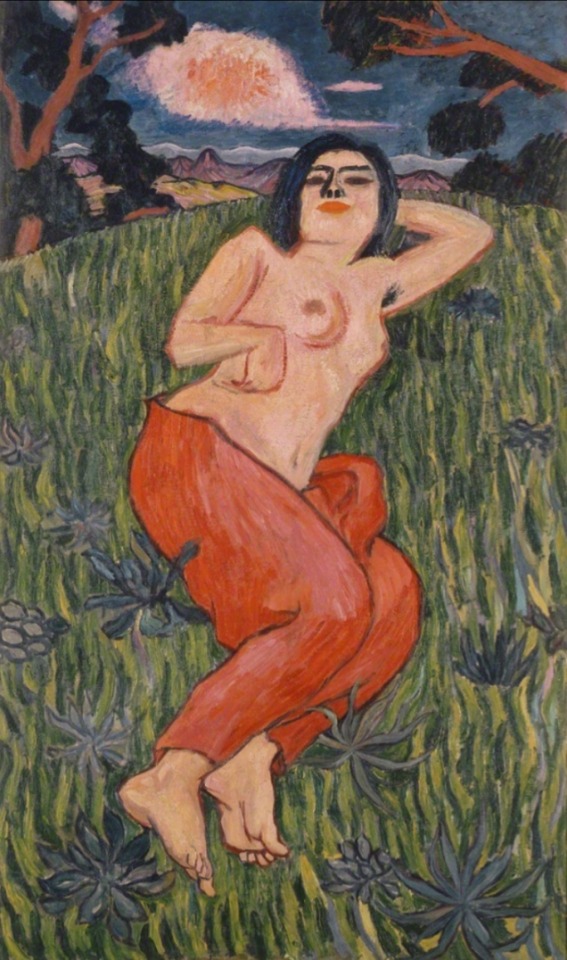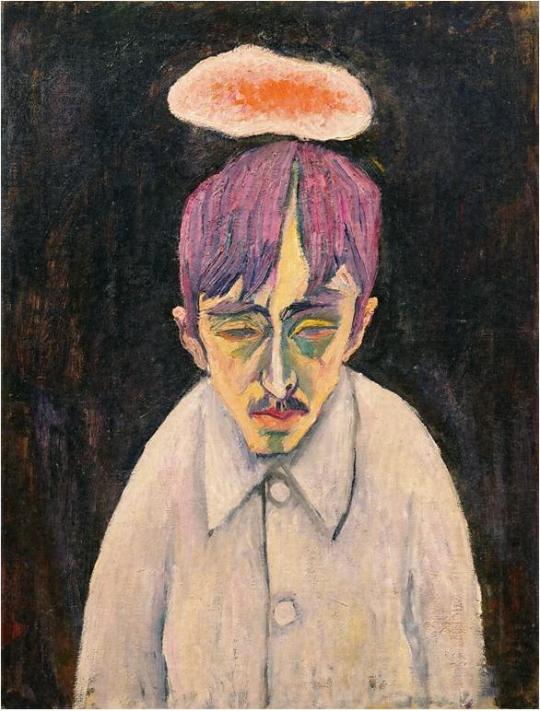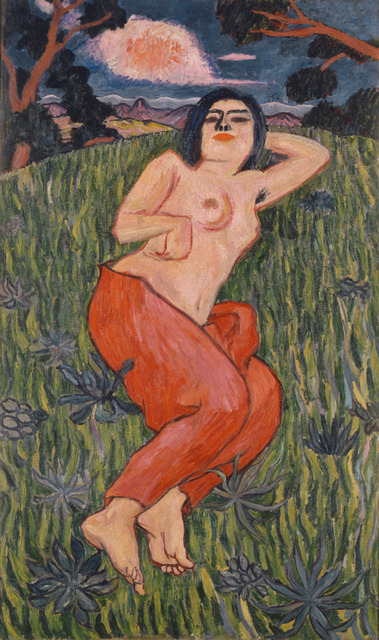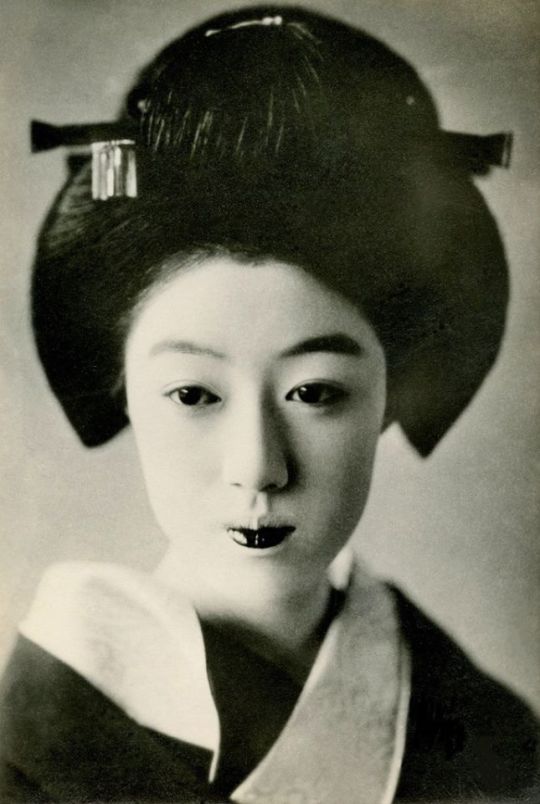#Tetsugoro Yorozu
Explore tagged Tumblr posts
Text
大阪で観た二つの展覧会──「TRIO」と「今に生きるラスキン」
10月12日から14日にかけて久しぶりに大阪へ出かけました。旅の主な目的は、大阪大学中之島センターを会場に開催された第75回美学会全国大会に参加し、そのセッションの一つを司会することだったのですが、三日にわたったその日程の合間を縫って、会場の建物に設けられているギャラリーで開催されていた(10月20日まで)「今に生きるラスキン」と、そのすぐ近くにある大阪中之島美術館で開催中の(会期は12月8日まで)「TRIO──パリ、東京、大阪モダンアート・コレクション」という二つの展覧会を訪れることができたのは幸いでした。とくに後者は出品作品への興味から、どこか��都合がつけば見たいと思っていました。 「TRIO」展は、パリ市立近代美術館、東京国立近代美術館、そして大阪中之島美術館という三つの美術館を代表すると同時に、文明史と芸術史の双方における近代性をさまざまな角度から照らし出す作品を展観することに…

View On WordPress
#Albert Marquet#Amedeo Modigliani#Constantin Brancusi#Germaine Richier#Henri Matisse#John Ruskin#Kotaro Migishi#Marc Chagall#Maurice Utrillo#Municipal Museum for Modern Art Paris#Nakanoshimia Museum of Art#Osaka University#Ruskin Alive#Shomei Tomatsu#Shunsuke Matsumoto#Tetsugoro Yorozu#The Japanese Society for Aesthetics#The National Museum of Modern Art#Toshiyuki Hasegawa#Trio Paris Tokyo Osaka Modern Art Collection#William Morris#Yuzo Saeki
1 note
·
View note
Text

Daily Painting
Tetsugoro Yorozu SELF-PORTRAIT WITH CLOUD (ND)
1 note
·
View note
Text

Yorozu Tetsugoro (Japanese,1885-1927)
Nude Beauty, 1912
Oil on canvas
107 notes
·
View notes
Photo

Tetsugoro Yorozu - Self portrait with cloud
35 notes
·
View notes
Photo

Yorozu Tetsugoro, Nude Beauty, 1912
3 notes
·
View notes
Photo

よろずグッズゲットしました(^_^*)Yorozu Tetsugoro 萬の大作、「裸体美人」と「もたれて立つ人」は竹橋から来ていましたが、この裸体美人ブローチは竹橋にもないかも❗️(^^)ふふふ…どこに付けるかが問題ですが…
1 note
·
View note
Text
GEISHA.
Ah de mi, de no encantarte gran señor, que laespina más sincera de mi vergüenza, encienda tu orgullo mancillado, y puedas, de esa forma,despreciarme para siempre como un castigo merecido.
-Fuman Gyo-
Moler las ostras en el vaso de mármol es, más que una técnica, un arte para garantizar que el fino polvo no lastime como cristal molido. Algo de carey ha de tener para evitar su absoluta liviandad y el daño, con el pasar del tiempo, se haga menos evidente sobre la piel prisionera de esta costumbre.
Una sutil, pero eficaz, capa de aceite se vuelve necesaria antes de expandir la pasta blanca, así paliar ardores por efectos de la astringencia.
Las tortugas y moluscos de los mares que rodean Deyima, una noche vendrán –estoy segura-, reclamarán por sus ancestros arrancándome los pómulos, y su venganza dejará sin compañía a los señores.Tinta del ciruelo alrededor de los ojos: finísima precisión y pluma de ave del cerezo se requiere en la tarea.
El carmesí de los labios (reducidos en su espesor), es un secreto de Yorozu Tetsugoro heredado por mi madre que hasta el día de su muerte no me es permitido conocer. Tras el biombo de su recámara, en su caja de viuda que nunca tuvo marido, hay un pote rebosante de crema perfumada que habrán de abastecerme hasta que llegue ese día.
Debajo de los afeites, igual que porcelana, mi propia cara. Mi cara no tiene historia, sólo un hueco de fatalidad. Nunca en ella habitó una niña; la sangre que se escurre entre los muslos al crecer; la mano de un amante en los bosques de Yokohama.
Nada, nadie, nunca, debajo de los afeites. Sólo un horizonte donde se hunde el sol, y esta eterna repetición de fábulas ofrendadas con mi boca de vulva sapiencial.
Sonido gutural que al convertirse en relato pone vida al puro blanco de la máscara, y se hace suficiente para endurecer el sexo de los hombres hambrientos de mentiras, por los siglos de los siglos.

0 notes
Text
The Magazine and the New Photography: Koga and Japanese Modernism
The Magazine and the New Photography: Koga and Japanese Modernism at Tokyo Photographic Art Museum Media: Photography (2018-03-06 - 2018-05-06)
Kōga was a coterie magazine that was produced for less than two years from 1932 to 1933. Printed in an A4 variant size, with the photographic plates reproduced using one-side offset printing, it contained thirty pages of articles and advertisements. It was an extremely extravagant publication but it is believed that its circulation was limited to only about 500 copies and even when it was being produced, very few people came into contact with it. Presided over by Yasuzō Nojima, who was joined by Ihei Kimura and Iwata Nakayama, it attracted amateurs from the Kansai area (Naniwa Photography Club, Ashiya Camera Club.) and was responsible for the emergence of the ‘Shinkō Shashin’ movement. The magazine introduced works by foreign artists, such as John Heartfield, Edward Steichen, and Eugène Atget while also carrying translations of essays by Franz Roh, Moholy-Nagy, etc., providing information on the foreign art scene. The first issue included an essay by Nobuo Ina entitled, ‘Shashin ni Kaere’ [Return to Photography] that was later acclaimed as being an important assessment of Japanese modern photography. Nojima was one of the central figures in the prewar photographic world while also enjoying an intimate relationship with members of the art world, serving as a patron for such artists as Tetsugoro Yorozu and the potter Kenkichi Tomimoto. The magazine was not limited to photography, but also featured a graphic montage by Masao Horino, an essay on typography by Hiromu Hara, and a discussion on motion pictures with the film director Teinosuke Kinugasa. Although it was of extremely high quality, the gradual rise of social unease and the ever more intrusive effects of the war led to a change in the activities of photographers and the sudden suspension of the publication of Kōga. Kimura and Nakayama, however, continued their energetic endeavors and were to have a profound influence on the postwar photographic scene. By looking at why a magazine of this type was produced when it was and why it suddenly ceased publication after such a short time, we are able to catch a glimpse of Japanese society and culture as it was during the 1930s.
from TAB Events - Most Popular http://www.tokyoartbeat.com/event/2018/0644
The Magazine and the New Photography: Koga and Japanese Modernism at Tokyo Photographic Art Museum Media: Photography (2018-03-06 - 2018-05-06)
Kōga was a coterie magazine that was produced for less than two years from 1932 to 1933. Printed in an A4 variant size, with the photographic plates reproduced using one-side offset printing, it contained thirty pages of articles and advertisements. It was an extremely extravagant publication but it is believed that its circulation was limited to only about 500 copies and even when it was being produced, very few people came into contact with it. Presided over by Yasuzō Nojima, who was joined by Ihei Kimura and Iwata Nakayama, it attracted amateurs from the Kansai area (Naniwa Photography Club, Ashiya Camera Club.) and was responsible for the emergence of the ‘Shinkō Shashin’ movement. The magazine introduced works by foreign artists, such as John Heartfield, Edward Steichen, and Eugène Atget while also carrying translations of essays by Franz Roh, Moholy-Nagy, etc., providing information on the foreign art scene. The first issue included an essay by Nobuo Ina entitled, ‘Shashin ni Kaere’ [Return to Photography] that was later acclaimed as being an important assessment of Japanese modern photography. Nojima was one of the central figures in the prewar photographic world while also enjoying an intimate relationship with members of the art world, serving as a patron for such artists as Tetsugoro Yorozu and the potter Kenkichi Tomimoto. The magazine was not limited to photography, but also featured a graphic montage by Masao Horino, an essay on typography by Hiromu Hara, and a discussion on motion pictures with the film director Teinosuke Kinugasa. Although it was of extremely high quality, the gradual rise of social unease and the ever more intrusive effects of the war led to a change in the activities of photographers and the sudden suspension of the publication of Kōga. Kimura and Nakayama, however, continued their energetic endeavors and were to have a profound influence on the postwar photographic scene. By looking at why a magazine of this type was produced when it was and why it suddenly ceased publication after such a short time, we are able to catch a glimpse of Japanese society and culture as it was during the 1930s.
http://www.tokyoartbeat.com//media/event/2018/0644-80 via Art Japan
0 notes
Audio
1 note
·
View note

